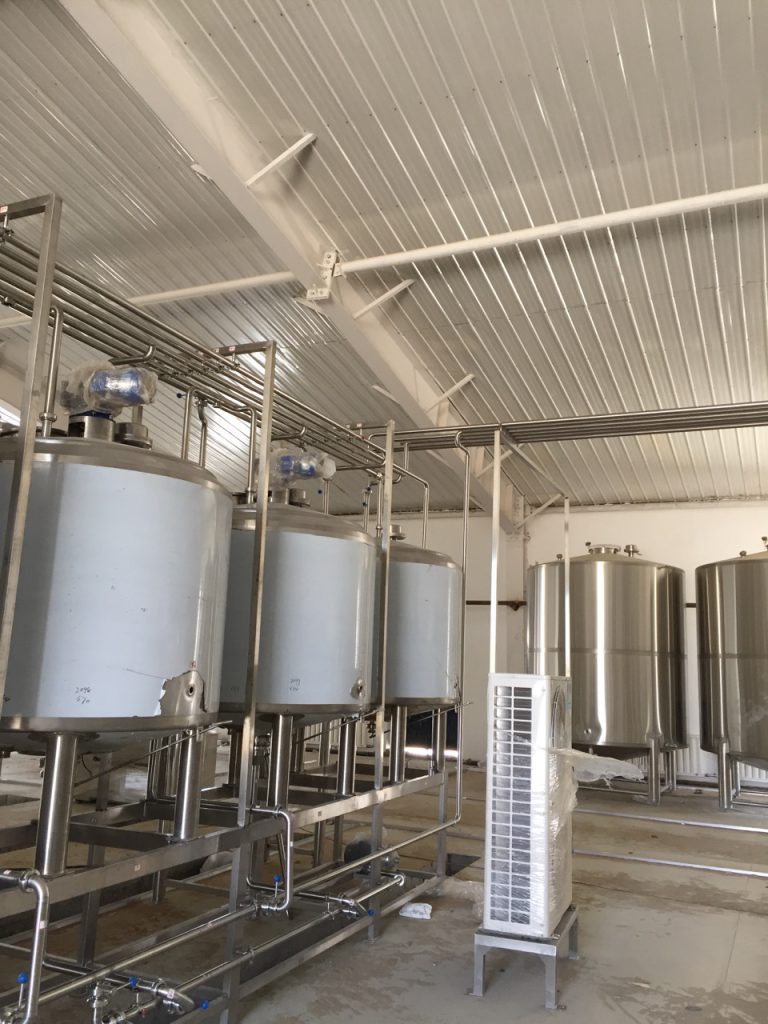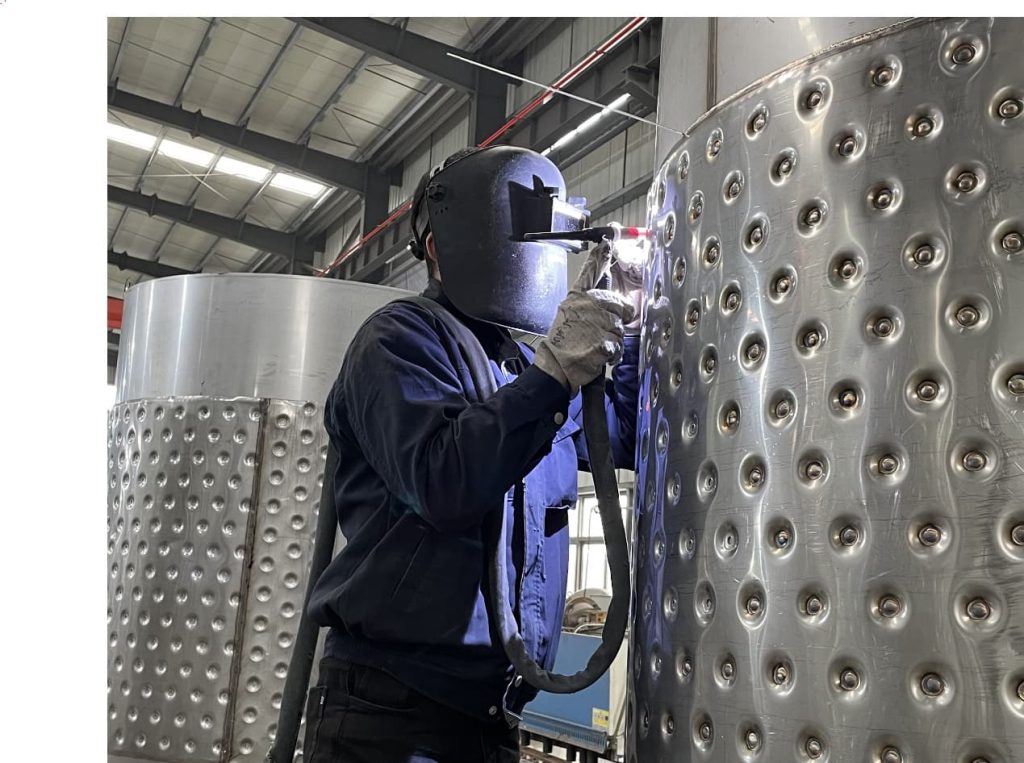Einführung

In der wettbewerbsorientierten Welt der Milchwirtschaft sind Effizienz und Qualität von größter Bedeutung. Ein entscheidendes Gerät, das beides deutlich verbessern kann, ist ein Milchkühltank. Indem ein Milchkühltank sicherstellt, dass die Milch richtig gekühlt und gelagert wird, kann er die Milchqualität, die Betriebseffizienz und die Gesamtproduktivität des Betriebs verbessern. In diesem Blog wird untersucht, wie die Investition in einen Milchkühltank Ihren Milchbetrieb verändern kann. Dabei werden verschiedene Aspekte wie die Erhaltung der Milchqualität, Kosteneinsparungen und die Einhaltung gesetzlicher Vorschriften behandelt.
Die Rolle von Milk Cooling in Dairy Farming
Milk cooling is essential in maintaining the freshness and quality of milk after milking. Without proper cooling, milk can quickly spoil due to bacterial growth and enzymatic activity. A milk cooling tank is specifically designed to handle this task, offering a range of benefits that contribute to the efficiency of dairy operations.
Preservation of Milk Quality
The primary function of a milk cooling tank is to preserve milk quality. Immediately after milking, milk is at a temperature that can promote bacterial growth. A cooling tank rapidly lowers the milk temperature to below 4°C (39°F), which slows down bacterial activity and enzymatic reactions. This helps maintain the milk’s freshness and quality, leading to:
- Reduced Spoilage: Proper cooling minimizes the risk of spoilage, ensuring that milk remains fresh and suitable for consumption or processing.
- Better Taste and Texture: Cooler temperatures help maintain the milk’s natural taste and texture, which is crucial for consumer satisfaction and product quality.
- Verlängerte Haltbarkeit: By preserving milk quality, a cooling tank extends the shelf life of milk, reducing waste and increasing profitability.
Enhancing Operational Efficiency
A milk cooling tank enhances operational efficiency by automating the cooling process and optimizing milk handling. This leads to several operational improvements:
- Reduzierte Arbeitskosten: Automated cooling systems reduce the need for manual intervention, allowing farm workers to focus on other tasks such as animal care and feed management.
- Streamlined Milk Handling: Cooling tanks can handle large volumes of milk, making it easier to process milk from multiple cows simultaneously. This efficiency helps manage milking operations more effectively.
- Consistent Quality Control: Automated systems ensure that milk is consistently cooled to the required temperature, reducing human error and maintaining uniform quality.
Financial Benefits of Milk Cooling Tanks
Investing in a milk cooling tank can lead to significant financial benefits for your dairy farm. Although the initial investment might be substantial, the long-term savings and increased revenue can outweigh the costs. Here are some financial advantages:
Cost Savings on Spoilage
One of the most immediate financial benefits of a milk cooling tank is the reduction in spoilage. By maintaining milk at optimal temperatures, you reduce the likelihood of spoilage and waste. This not only saves money but also ensures that more of your milk is saleable.
Energieeffizienz
Modern milk cooling tanks are designed with energy efficiency in mind. They use advanced cooling technologies that consume less energy compared to older methods. Over time, this can lead to substantial savings on energy costs.
Higher Milk Prices
High-quality milk often commands higher prices in the market. By ensuring that your milk is consistently fresh and of high quality, you can negotiate better prices with buyers and potentially increase your revenue.
Key Features and Specifications of Milk Cooling Tanks
| Besonderheit | Beschreibung |
|---|---|
| Kühlmethode | Different cooling methods such as direct expansion, indirect expansion, and plate cooling. |
| Tank Material | Common materials include stainless steel, which offers durability and easy cleaning. |
| Temperaturbereich | Typical cooling tanks maintain temperatures between 2°C to 4°C (36°F to 39°F). |
| Kontrollsystem | Advanced tanks may feature digital temperature controls, alarms, and remote monitoring. |
| Insulation Type | Insulation options include polyurethane foam and fiberglass, which help maintain temperature. |
| Energy Source | Tanks can be powered by electricity, gas, or a combination of energy sources depending on the model. |
| Maße | Available in various sizes, from small units for small farms to large units for industrial operations. |
| Cleaning Features | Some tanks come with automated cleaning systems to reduce manual cleaning effort. |
| Warranty Period | Warranty periods can vary, typically ranging from 1 to 5 years, depending on the manufacturer. |
| Zusätzliche Merkmale | Options may include automatic milk level sensors, temperature recording, and integration with farm management software. |
Regulatory Compliance and Quality Assurance
Adhering to dairy regulations is crucial for avoiding fines and maintaining a good reputation. A milk cooling tank helps you meet regulatory standards and ensures quality assurance through:
Meeting Health Standards
Many regions have strict regulations regarding milk storage and handling. A milk cooling tank helps you comply with these standards by keeping milk at the required temperatures, thus avoiding potential health issues and legal problems.
Maintaining Accurate Records
Many modern cooling tanks come equipped with digital monitoring systems that track temperature and other important data. These systems provide accurate records that can be useful during inspections and audits, proving that you are in compliance with regulations.
Enhancing Product Safety
Proper cooling is crucial for product safety. By preventing the growth of harmful bacteria and pathogens, a milk cooling tank helps ensure that the milk you produce is safe for consumption, reducing the risk of foodborne illnesses.
Installation und Wartung von Milk Cooling Tanks

Proper installation and maintenance are key to ensuring the optimal performance of your milk cooling tank. Here are some essential tips for installation and upkeep:
Professionelle Installation
For optimal performance, have your milk cooling tank installed by a professional. Proper installation includes setting up the tank, connecting it to the milk pipeline, and calibrating the cooling system. Professional installation ensures that the tank operates efficiently and minimizes the risk of issues down the line.
Regular Maintenance
Regular maintenance is crucial for keeping your milk cooling tank in good working condition. Routine tasks include:
- Reinigung: Regularly clean the tank to prevent contamination and maintain hygiene.
- Inspection: Check for any signs of wear and tear or potential leaks.
- Component Checks: Inspect cooling components and refrigerants to ensure they are functioning correctly.
Monitoring Performance
Many modern tanks feature digital controls and monitoring systems that provide real-time data on temperature and cooling efficiency. Use these systems to monitor performance and identify any issues early, ensuring that the tank continues to operate effectively.
Abschluss
Investieren in eine Milchkühltank is a strategic decision that can greatly enhance the efficiency and profitability of your dairy farm. By preserving milk quality, improving operational efficiency, and offering financial and regulatory benefits, a milk cooling tank is a valuable addition to any dairy operation. Proper installation and maintenance are essential to maximizing its benefits and ensuring long-term success. With the right cooling tank, you can achieve better milk quality, reduced spoilage, and increased revenue, ultimately contributing to the overall success of your dairy business.
Häufig gestellte Fragen
Q:What temperature should milk be stored at in a Kühltank?
A:Milk should be stored at a temperature below 4°C (39°F) to prevent bacterial growth and maintain freshness.
Q:How often should a milk cooling tank be cleaned?
A:The milk cooling tank should be cleaned after each milking session to prevent contamination and maintain hygiene.
Q:Can a Milchkühltank be used for other types of liquids?
A:Milk cooling tanks are specifically designed for dairy products. Using them for other liquids may affect their performance and efficiency.
Q:What should I do if my milk cooling tank isn’t cooling properly?
A:Check for potential issues such as refrigerant leaks, faulty components, or incorrect temperature settings. Consult a professional technician for diagnosis and repair.
Q:How can I ensure my Milchkühltank is energy-efficient?
A:Choose a milk cooling tank with high energy efficiency ratings, perform regular maintenance, and monitor performance to ensure optimal energy use.

